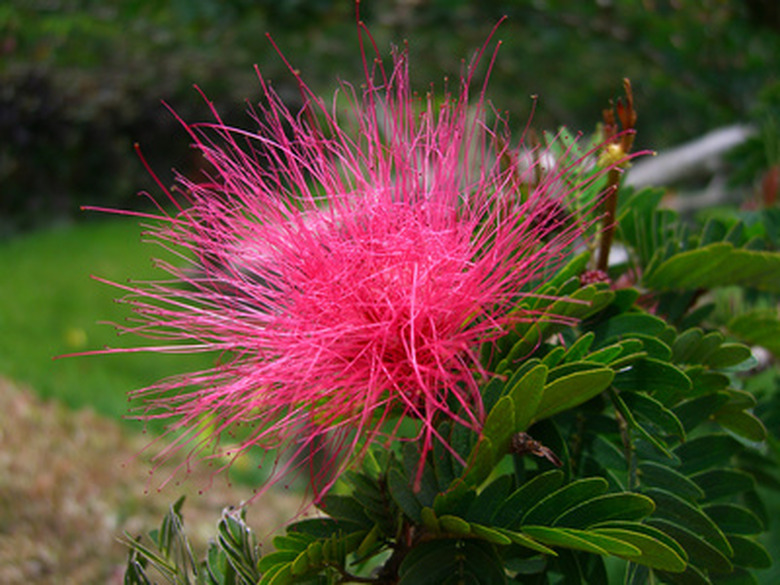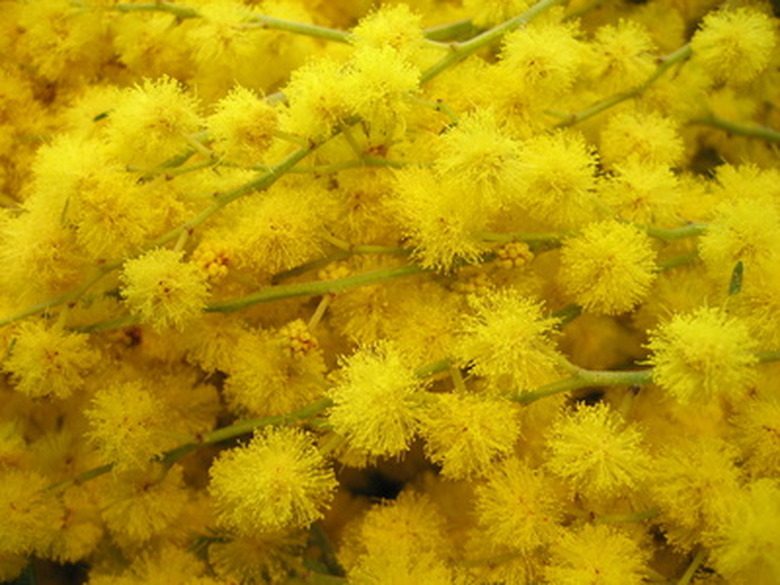What Is The Origin Of Mimosa Trees?
The mimosa tree is also commonly known as a silk tree. Its botanical name is Albizia julibrissin. But what most people remember about this small tree is its profusion of powder-puff-like blooms, which adorn its branches from about June through September. Despite the mimosa tree's presence in many countries, there is much uncertainty as to its true origin in some of those places.
Travels to the West
The mimosa is native from Iran to eastern China, according to a University of Arkansas Division of Agriculture article written by retired cooperative extension horticulturist Gerald Klingaman. Klingaman names the French Jesuit missionary, Pierre Nicholas d'Incarville (1706 to 1757), as the person responsible for introducing the mimosa tree to the Western world, beginning around 1745.
Planted in English Soil
Richard Bateman receives credit for introducing the mimosa tree to England around 1745.
- The mimosa tree is also commonly known as a silk tree.
- Klingaman names the French Jesuit missionary, Pierre Nicholas d'Incarville (1706 to 1757), as the person responsible for introducing the mimosa tree to the Western world, beginning around 1745.
Cultivation in Italy
The mimosa tree possibly arrived in Italy from Constantinople in 1749, brought there by the Cavaliere Filippo Albizzi, according to a May, 1968, publication of The Arnold Arboretum of Harvard University, by Gordon P. DeWolf, Jr.
American Origins
The mimosa tree is prevalent in the southeastern United States. Some sources believe that the tree first arrived in the United States in 1745, likely as an ornamental whose beautiful flowers were the main attraction. Klingaman questions whether the year 1745 is accurate for the tree's introduction to America. There was no apparent connection between d'Incarville and an American plantsman. Klingaman also mentions that Thomas Jefferson grew the mimosa tree at Monticello, and that perhaps Jefferson procured the seeds during his service as ambassador to France in the 1780s.
French Role
Andre Michaux (1746 to 1802) was a French botanist and adventurer who traveled the world in search of plants to bring back for the betterment of France's agriculture and forestry. He established a French botanical garden in Charleston, sponsored by the French government. Michaux brought the mimosa tree to America, according to records in the Drayton Papers Collection.
- The mimosa tree possibly arrived in Italy from Constantinople in 1749, brought there by the Cavaliere Filippo Albizzi, according to a May, 1968, publication of The Arnold Arboretum of Harvard University, by Gordon P. DeWolf, Jr.
- The mimosa tree is prevalent in the southeastern United States.
A Tradition of Exports
From the early 1900s, the mimosa became a major asset of the scenic Cote d'Azur in France, giving rise to the profession of "mimosiste" for the export of mimosas. "The biggest forest of mimosa of Europe" is how the Mandelieu-La Napoule website describes the scenic route, where the mimosas bloom between January and March and an annual mimosa festival takes place in February.
Changing Sentiments
Among the Library of Congress' American Memory Home collections is "Washington As It Was: Photographs by Theodor Horydczak, 1923 to 1959." The collection reflects the architecture and social life of the Washington metropolitan area of the 1920s, 1930s and 1940s. A mimosa tree is among the more than 14,000 photographs taken by Horydczak and included in this collection. But the mimosa is a fast-growing, hardy tree with a major drawback: it is ruthless in its displacement of native trees. In some Southeastern states, the mimosa is no longer welcome for this reason, branded a significant threat years after it first arrived.

